It’s been over a year since AMD first launched their first generation Llano APUs which brought with them solid CPU/GPU performance and power efficiency on a single die, and it looks like AMD’s is now releasing their new highly anticipated second generation APU, codenamed Trinity. The Trinity APU will be based off the new Piledriver microarchitecture, so we’ll be expecting to see improvements in both clock frequency as well as instructions per clock.
That said, the main changes from the Llano to Trinity is the switch to Piledriver x86 module which is derived from the desktop based Bulldozer CPUs. This means higher clock speeds starting at a base clock of 2.3GHz and turbo up to 3.2GHz. We’ll also see a drop in TDP which will put the dual core Trinity APUs at 17W and the quad core chips at 35W. AMD is also promising a 28% CPU and 58% GPU performance leap from the last generation Llano processors. Additionally, AMD is also claiming an improvement in GPU performance along with the inclusion of some additional media related features such as AMD’s HD Media Accelerator suite.
- AMD Perfect Picture HD: The first step in that transparent user experience is automatic video processing, which will make fine adjustments to image quality on the fly.
- AMD Quickstream: Most of us spend a fair bit of time watching videos on the web, and have run into the dreaded buffering bar. Quickstream aims to handle bandwidth intelligently: when the PC detects that an application or website is hitting the GPU, Quickstream will assign it a higher priority, theoretically ensuring a smoother experience.
- AMD Video Converter: Dedicated hardware-based encoding lets Trinity transcode media files faster and more efficiently. The technology also enables full-HD, multi-person video conferencing. AMD is working with companies like Polycom to develop software intended to make this work.
- AMD Steady Video: We’ve seen Steady Video before. It was introduced with Llano and its purpose is to stabilize shaky recorded video. It’s currently supported by Internet Explorer, Mozilla Firefox, Google Chrome, and Windows Media Player — Trinity adds support for VLC as well, in an upcoming software update.
- AMD Eyefinity: Eyefinity isn’t new, but Trinity will be able to support the multi-display technology without needing a discrete GPU: this means ultrathin laptops that can potentially output to three displays — not including their native monitor.
For more info you can visit the AMD webiste or feel free to start a discussion on our forums. For now, only the mobile edition of the Trinity APUs designed for ultra sleek and slim notebooks will start to become available with the desktop versions following suit in the coming months.
Source: AMD
Press Release
Second-Generation AMD A-Series APUs Enable Best-in-Class PC Mobility, Entertainment, and Gaming Experience in Single Chip
AMD (NYSE: AMD) today announced the widely anticipated launch of its 2nd-Generation AMD A-Series Accelerated Processing Units (APUs) for mainstream and ultrathin notebooks, All-in-One and traditional desktops, home theater PCs and embedded designs.
The 2nd-Generation A-Series APU, codenamed “Trinity”, is a grounds-up improved design over the previous generation, enabling a best-in-class PC mobility, entertainment, and gaming experience. New features of the product design include:
- Double the performance per watt of the previous generation;2
- The AMD HD Media Accelerator with a unique set of technologies designed to optimize video quality available with premium and Internet video content, and accelerate video file conversion;
- An increase in CPU performance of up to 29 percent3 with higher processor speeds thanks to the next-generation AMD “Piledriver” CPU core with 3rd-Generation AMD Turbo Core technology, where power is dynamically shifted between the CPU and GPU depending on application needs, effectively providing a more responsive experience that can boost CPU frequencies to up to 3.2 GHz;
- AMD Radeon™ HD 7000 Series graphics for an increase of graphics performance up to 56% over the previous generation.4 Combined, the CPU and GPU cores deliver more than 700 gigaflops of computing performance5 – several times more than the fastest x86 CPUs – to boost performance of hundreds of applications;
- Up to 12 hours of battery life through CPU and GPU power enhancements, with clear battery life leadership in notebook form factors.
“The latest OEM notebooks, ultrathins, All-in-Ones and desktops based on the new AMD A-Series APU enable the best video and gaming experiences, highly responsive performance with AMD Turbo CORE, and accelerate an ever-increasing range of productivity and multimedia applications — in sleek, stylish designs at price points that make sense,” said Chris Cloran, corporate vice president and General Manager, AMD Client Business Unit. “Our 2nd-Generation AMD A-Series APU is a major step forward in every performance and power dimension, allowing users to enjoy a stunning experience without having to give up the things that matter to them most. This experience doesn’t stop at mainstream notebooks. It carries over into affordable ultrathin form factors featuring the latest in AMD Radeon™ graphics.”
The Growing AMD Accelerated Application Ecosystem
The developer ecosystem continues to gravitate to the unmatched level of compute and unique processing capabilities of the APU as more than 100 applications and games are now accelerated by AMD APUs. The 2nd-Generation AMD A-Series APU gives users superior Web-based video experience thanks to plug-ins for Google Chrome, Firefox and Internet Explorer 9 that make it easy for consumers to turn on AMD Steady Video technology.6Recent applications that have been optimized for use on AMD A-Series APUs include Adobe Photoshop CS6, WinZip 16.5 and VLC Media Player. AMD A-Series APUs are also well-positioned to take advantage of the upcoming transition to the Windows® 8 operating system.
“We are excited for the introduction of the 2nd-Generation AMD A-Series APU and are confident it will continue the great work Microsoft and AMD have done together on the A-Series APU,” said Aidan Marcuss, senior director, Windows Business Planning, Microsoft Corp. “We look forward to seeing the A-Series APU in action with Windows 8 to deliver a great user experience across a variety of hardware.”
For developers who want to engage in the industry’s move toward heterogeneous computing, the upcoming AMD Fusion12 Developer Summit will offer them a unique opportunity to enhance their knowledge base. More information on AFDS can be found here.
Unmatched Mobility
With more than 12 hours of ‘resting’ battery life, AMD is now an industry leader in notebook battery-life performance. The 2nd-Generation AMD A-Series APU delivers increased levels of performance, while consuming half the power as its predecessor.
These gains can be attributed to the new power-optimized “Piledriver” CPU core, as well as to AMD Start Now technology, which is designed to maximize system responsiveness by quickly entering and exiting low power states. With AMD Start Now, the computer resumes from sleep mode in as few as two seconds and boots to the desktop in as few as 10 seconds.7
In ultrathin form factors, AMD enables an uncompromised visual experience thanks to a power-efficient and premium AMD Radeon graphics engine. Consumers can expect to see ultrathin notebooks based on dual-core 17-watt and quad-core 25-watt AMD A-Series APUs. These products will be easily identifiable by aluminum-styled VISION Technology stickers at a range of competitive price points.
Best-in-class Entertainment
As more and more people turn to their computers as the hub for their entertainment, the visual aspect of computing becomes ever more important. To enhance these capabilities, AMD created the AMD HD Media Accelerator – a unique set of technologies that enable the best video quality on a PC. Key features of the HD Media Accelerator include:
- AMD Perfect Picture HD – An image, video processing and display technology that automatically makes images and video better with color vibrancy adjustments, edge enhancement, noise reduction and dynamic contrast fixes;8
- AMD Steady Video Technology – A technology that enables smooth playback of jittery video content with a single button click thanks to plug-ins for popular Web browsers and multimedia applications;6
- AMD Quick Stream Technology – A new technology that prioritizes video streaming on PC systems for a smooth, virtually uninterrupted video stream;
- True HD video chat with up to four people at once;
- AMD Video Converter – A video compression engine for fast conversion and sharing of media files across multiple formats and devices;
- Full decode support for H.264, MPEG-2, VC-1, MVC, DivX and WMV.
Gaming Leadership
The 2nd-Generation AMD A-Series APU builds on AMD’s legacy of gaming leadership with an increase in graphics performance of up to 56% over the previous generation4 and support for:
- AMD Eyefinity Technology – For the first time, this immersive technology is available from an APU without the need for a discrete graphics card;10
- Performance-leading DirectX® 11 graphics architecture and 1080p gaming a life-like level of detail;
- AMD Radeon dual graphics support that delivers a performance boost of up to 75 percent when adding a discrete graphics card to the APU.11 The AMD Radeon dual graphics option also offers support for DirectX® 9 for older game titles, and uses new AMD CrossFire™ Technology Profiles for easier updates.
Availability and Technical Details
AMD has a record number of design wins with companies like Acer, Asus, HP, Lenovo, Samsung and Toshiba based on our 2nd-Generation AMD A-Series APUs and VISION Technology from AMD, with mainstream and ultrathin notebooks as well as embedded solutions, available beginning today.
| AMD A-Series Mainstream Notebook APUs | ||||||||
| APU Model | AMD Radeon™ Brand | TDP | CPU Cores | CPU Clock (Max/Base) | AMD Radeon™ Cores | GPU Clock (Max/Base) | L2 Cache | Max DDR3 |
| A10-4600M | HD 7660G | 35W | 4 | 3.2GHz/2.3GHz | 384 | 686MHz/497MHz | 4MB | DDR3-1600 DDR3L-1600 DDR3U-1333 |
| A8-4500M | HD 7640G | 35W | 4 | 2.8GHz/1.9GHz | 256 | 655MHz/497MHz | 4MB | DDR3-1600 DDR3L-1600 DDR3U-1333 |
| A6-4400M | HD 7520G | 35W | 2 | 3.2GHz/2.7GHz | 192 | 686MHz/497MHz | 1MB | DDR3-1600 DDR3L-1600 DDR3U-1333 |
| AMD A-Series Ultrathin Notebook APUs | ||||||||
| APU Model | AMD Radeon™ Brand | TDP | CPU Cores | CPU Clock (Max/Base) | AMD Radeon™ Cores | GPU Clock (Max/Base) | L2 Cache | Max DDR3 |
| A10-4655M | HD 7620G | 25W | 4 | 2.8GHz/2.0GHz | 384 | 497MHz/360MHz | 4MB | DDR3-1333 DDR3L-1333 DDR3U-1066 |
| A6-4455M | HD 7500G | 17W | 2 | 2.6GHz/2.1GHz | 256 | 424MHz/327MHz | 2MB | DDR3-1333 DDR3L-1333 DDR3U-1066 |
Desktops systems and component channel parts will be available later this year.

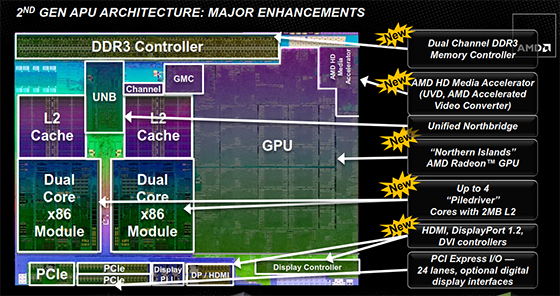
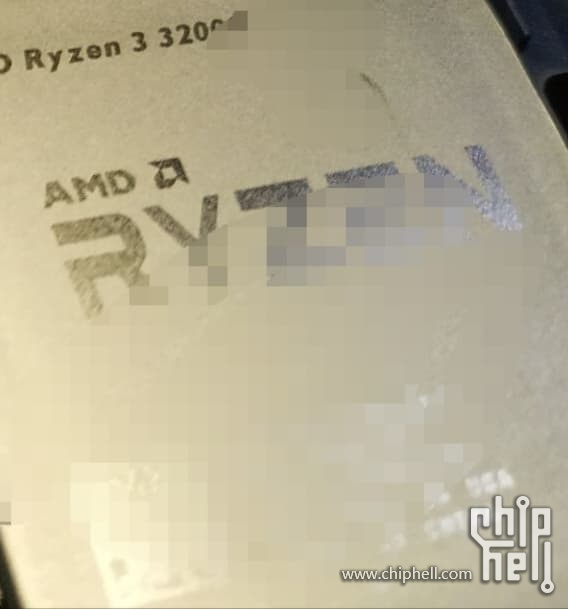
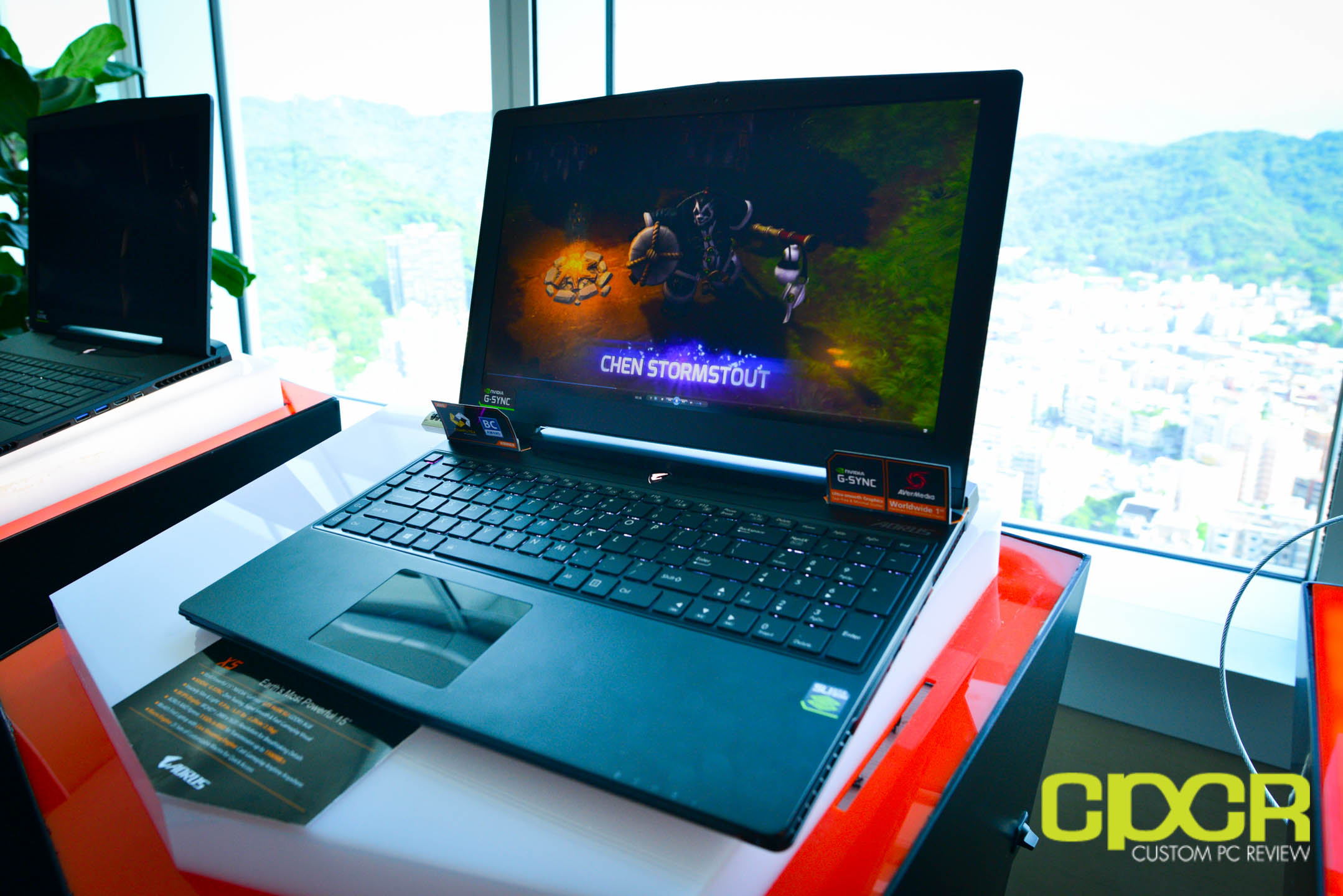
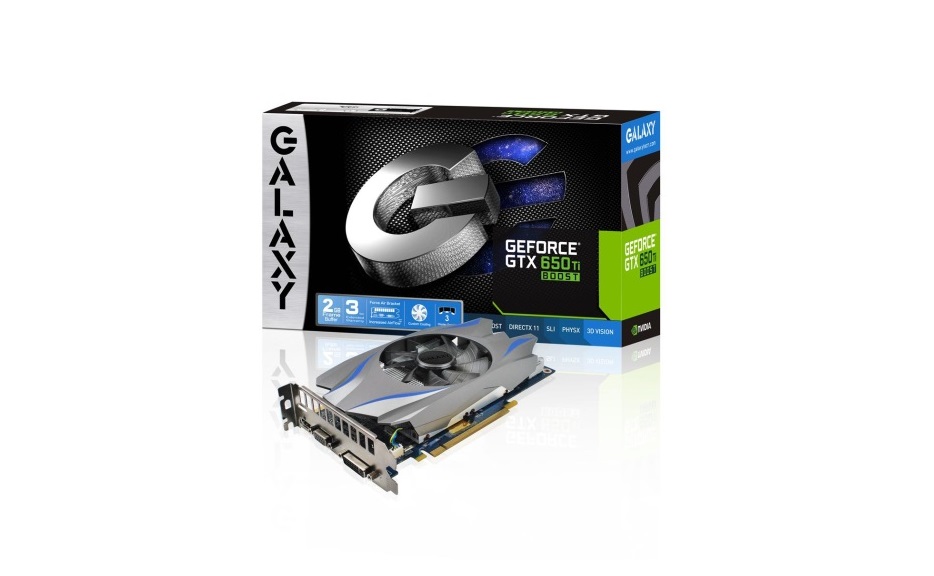
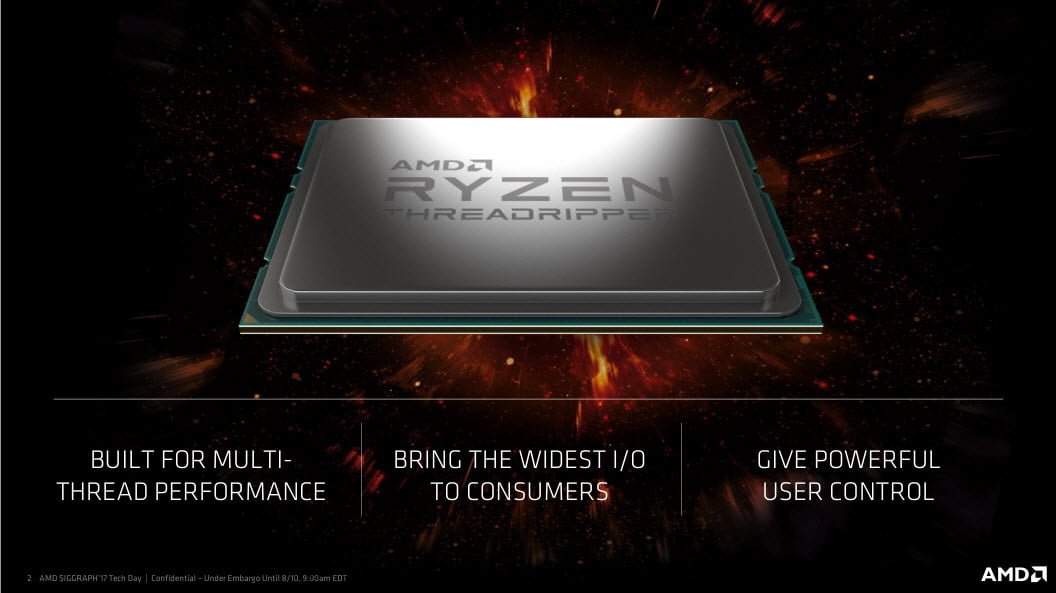
From the early reviews of the laptop chips, these actually seem like a decent alternative to sandy bridge if you are looking for a cheap laptop without a dedicated video card. Perhaps some software developers will take advantage of the CPU and GPU cores being able to access the same address space for something nifty. But overall even with the improvements to the bulldozer cores, intel will probably still win with ivy. Kinda sad because the bulldozer idea was really cool on paper